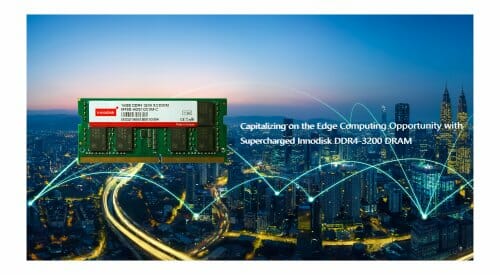Innodisk’s DDR4-3200 DRAM module lineup provides technology leaders with the performance and features necessary to capitalize on the future of computing.The future of computing lives on the edge. With the advent of 5G and the exponential growth of connected devices, more and more data is generated and processed at the edge. To help businesses keep up with this massive quantity of data and to capitalize on the vast business opportunities it brings, Innodisk is unveiling top-of-the-line memory solutions optimized for edge computing.
An Unstoppable Trend with Limitless Opportunities
Gartner predicts that enterprise-generated data created and processed outside centralized data centers will reach 75 percent by 2025, up from 10 percent in 2018. With effective data processing a cornerstone of trends such as the Internet of Things (IoT) and 5G networking, it marks a critical investment for businesses across all industries that want to fully capitalize on the massive business opportunities that these trends present.
Memory Optimized for Demanding Edge Computing
Edge computing solutions require high-performance memory modules optimized for processing enormous amounts of data at a blistering pace. To help businesses address this requirement, Innodisk is introducing a comprehensive range of DDR4-3200 modules available in form factors and capacities ideal for edge computing.
Innodisk’s DDR4-3200 series is available in 4 GB, 8 GB, and 16 GB capacities across SODIMM, UDIMM, and RDIMM form factors including optional ECC—with Innodisk the first company in the world to pack all that performance into a 4 GB module. Fortified by Innodisk’s signature rugged technologies, Innodisk’s DDR4-3200 DRAM modules are ready for even the toughest edge computing applications.
Addressing All Memory Needs
With the introduction of DDR4-3200 DRAM, Innodisk demonstrates its memory market and technology leadership. The new lineup combined with Innodisk’s DDR4-2933 series fulfill performance demands across platforms and industries and presents businesses with ample opportunity to capitalize on the future of edge computing.








